DIY Home Security Checklists
With a surge in concern over home safety, the importance of a solid security plan has never been more significant. Knowing this, it becomes essential for you to prioritize your home’s safety. The article “DIY Home Security Checklists” equips you with everything you need to address home security confidently. This easy-to-follow checklist provides the groundwork to help protect your treasured home against unwanted intruders. It’s time to gain peace of mind by ensuring your home’s fortress, and this article is your steadfast ally.
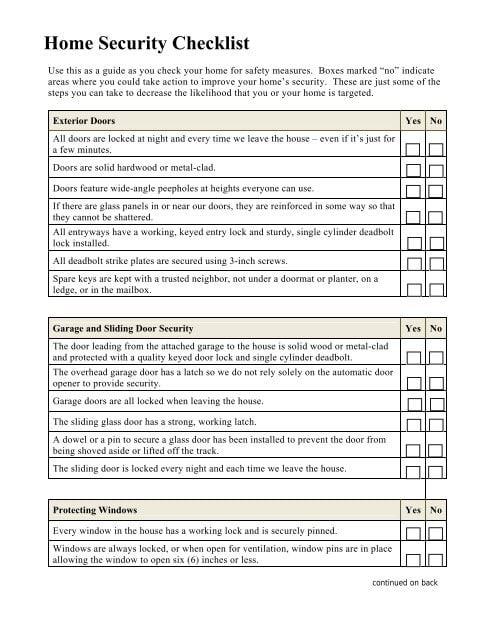
Understanding Home Security
Understanding home security is crucial in ensuring the safety and protection of your home. It encompasses anything that you can do to safeguard your home, from installing locks on your doors and windows, to using security cameras and alarm systems. But beyond these systems, understanding home security also means being aware of potential threats and knowing how to mitigate them.
Benefits of a Secure Home
A secure home is not only a safe place for you and your family but also offers peace of mind and keeps unwanted intruders at bay. It protects your valuable possessions from thieves and guards against any potential harm from intruders. It also increases the value of your property especially in neighborhoods where every household takes security seriously.
Common Home Security Misconceptions
There are plenty of misconceptions about home security. Some people believe that they do not need a home security system because they think their neighborhood is safe or that burglars only target large, expensive homes. However, no area is exempt from potential break-ins and even modest homes can be targets. Another misconception is that home security systems are too expensive or complex to operate, when in reality, there are a lot of affordable and user-friendly options in the market.
Essentials of a Home Security System
The essentials of a home security system depend on your particular needs but it typically includes door and window sensors, a high-decibel alarm, and surveillance cameras. Some also have smart capabilities like remote monitoring and control from your smartphone. It’s important to understand these essentials to make the best decision when it comes to your personal home security.
Entry Points Security
Securing all potential entry points to your home is the first step in building a robust home security system. This includes doors, windows, garages, roofs, and basements.
Securing Doors
Your front door is the primary entrance to your home. Installing deadbolt locks on your doors, having solid core doors, and placing security bars are just a few ways to make your doors secure. It is also a good idea to install peepholes and doorbell cameras to monitor who comes to your doorstep.
Protecting Windows
Windows are common points of entry for burglars. To protect them, you can use window security film, window or glass break sensors, security bars, or reinforced glass. Remember to always keep your windows locked when not in use.
Garage Safety Measures
Garages are often overlooked as potential entry points. Keep your garage doors locked at all times and secure them with a good quality, keyed lock. Add extra security by installing a peephole or a window in the door to see inside.
Bolstering Roof Security
Entry from the roof is less common but still possible, especially for homes with accessible roofs. Secure your roof by trimming nearby trees to prevent access and consider installing roof security measures like roof alarms.
Securing Basements and Cellars
Basements and cellars often have windows or doors that can be potential access points. Ensure these are also well-secured with quality locks, security bars, and alarms.
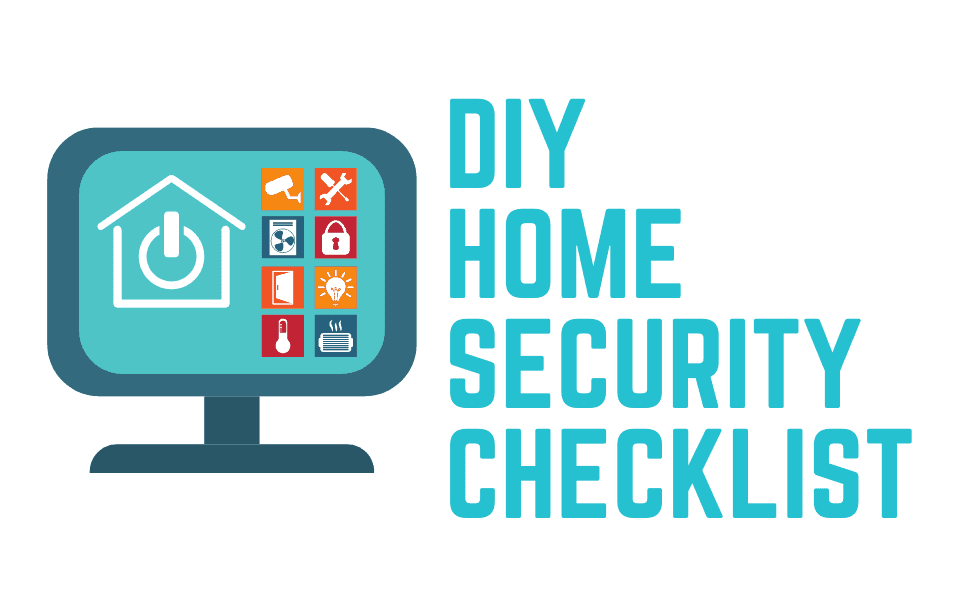
Interior Security Measures
Apart from securing the entry points, adding security measures inside your home can significantly enhance your home’s overall security.
Use of Deadbolt Locks
Deadbolt locks are one of the most effective types of door locks because they can only be moved to the open position by rotating the lock cylinder. This makes forced entry a lot more difficult.
Security Cameras Placement
Security cameras are a great tool for monitoring and deterring unwanted visitors. They should be placed at high-risk areas like front and back doors, ground floor windows, and garages. Make sure they’re visible to act as deterrents while being high enough to prevent tampering.
Motion Sensor Installation
Motion sensors detect movement, and when paired with an alarm or light, can deter intruders. They are best placed in areas where people are most likely to pass through like hallways and staircases.
Setting Up Timers for Lights
Timers for lights can create the illusion of occupancy when you are away. Consider setting up some lights on timers to deter burglars.
Securing Valuables
Aside from improving your home’s overall security, it’s also important to secure valuables inside. Consider using a home safe or an off-site safety deposit box to store important documents and valuable items.
Exterior Security Measures
Securing the exterior of your home is just as important as the interior. This can be achieved through lights, landscaping, and securing outbuildings.
Installing Outdoor Security Lights
Outdoor security lights, especially ones that are motion-activated, are excellent deterrents for would-be burglars as they illuminate dark corners and make approaching your home more risky for them.
Landscaping For Security
Proper landscaping can also enhance home security. For instance, keeping shrubs and trees trimmed prevents them from being used as hiding spots. Also, thorny bushes under windows can be a deterrent for potential intruders.
Securing Outdoor Structures Like Sheds
Outdoor structures like sheds or detached garages also need to be secured. They not only house valuable tools which can be stolen, but can also potentially give burglars the means to break into your home.
Surveillance Cameras for Exterior
Surveillance cameras for the exterior help to monitor your property and deter potential burglars. Ensure they are placed at potential entry points and are visible to anyone scoping out your home.
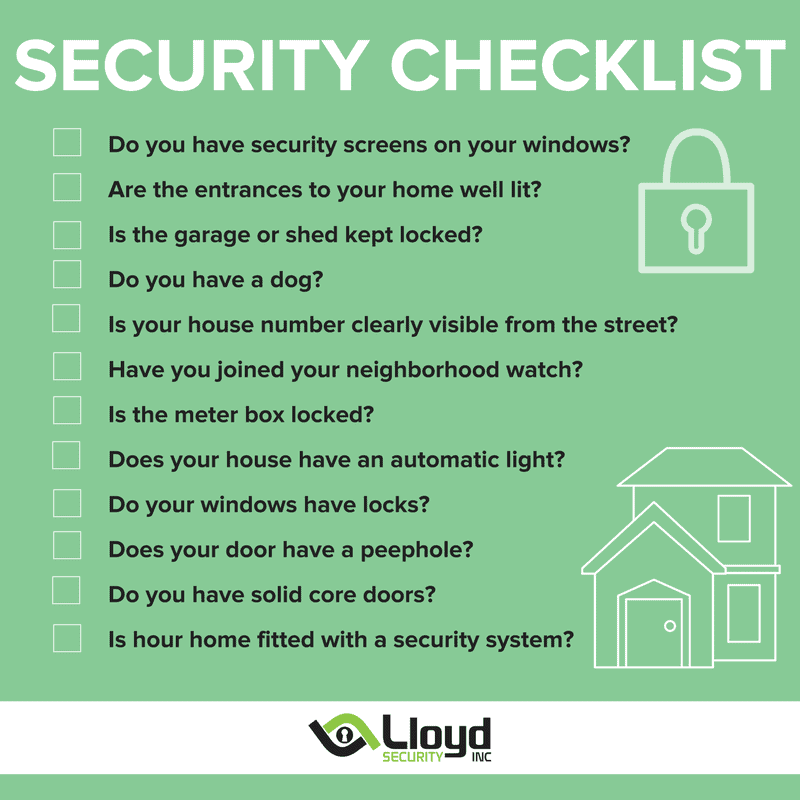
Security During Vacations
One of the times your home is most vulnerable is when you’re away for prolonged periods, like during vacations. Consequently, it’s important to take extra security measures during these times.
Setting up Automated Lights
Automated lights can create an illusion of occupancy, deterring potential burglars. You can use smart light bulbs that you can control remotely to randomize your lighting pattern.
Hold Mail Service
A packed mailbox can alert burglars that you’re not home. Arrange for the postal service to hold your mail or ask a trusted neighbor to collect it for you.
Neighbor Monitoring
A trusted neighbor can be an extra pair of eyes on your home. Let them know if you’ll be away and ask them to alert you or the authorities of any suspicious activity.
Remote Surveillance Access
If your security system has the capability, use remote surveillance so you can keep an eye on your home from anywhere. This can give you valuable peace of mind while you’re away.
DIY Wireless Home Security Systems
A DIY wireless home security system can be an economical and flexible security solution for your home. It allows you to tailor your security needs without requiring professional installation or costly monitoring services.
Pros and Cons
The major pro of a DIY wireless home security system is the flexibility it offers—you can choose exactly what equipment you want and where it should go in your home. Another is its lower cost, as professional installation and contracts are not required. However, these systems do rely on your vigilance in both installation and monitoring. Also, they can sometimes be less reliable and easily hacked if not secured properly.
Installation Tips
Before installation, thoroughly plan out where each component should go. Some key points to consider are the locations of your home that are most likely to be accessed by intruders. Always test your system thoroughly after installation to ensure all components are working properly.
Maintenance Guide
Maintain your DIY system by testing it regularly. Check the batteries in each sensor every few months and check for any software updates for your system.
Choosing the Right System
When choosing a DIY home security system, consider your specific needs and the degree of security you desire. Reviews and ratings can be a useful resource to help determine product efficiency, reliability, and ease of use.
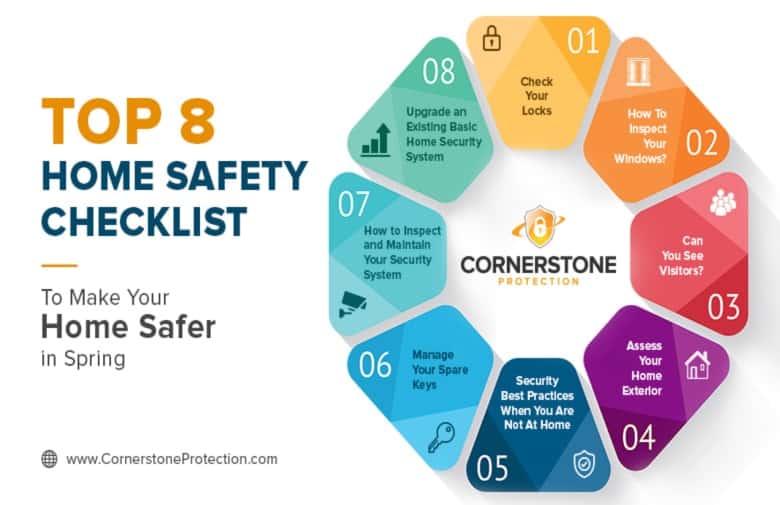
Security for Apartment Living
Living in an apartment requires some unique security considerations. Even though you may not have control over some aspects like the building’s main entry points, there’s still a lot you can do to enhance your security.
Securing Apartment Entrances
Ensure your apartment doors and windows are secure. If the current locks look worn out or seem weak, request the landlord or management to change them. Remember always to keep them locked, even when you are home.
Balcony Security
Never leave your balcony door unlocked, even if you’re on a higher floor. Balconies can provide easy access points for intruders. If possible, secure the door with an extra lock or bar.
Security Systems Suitable for Apartments
Invest in a home security system that is suitable for apartments. This typically means a DIY, wireless system that’s easy to install and relocate. Choose a system that provides adequate coverage for your apartment and fits your personal security needs.
Child and Pet-friendly Security Measures
Consider the safety of children and pets when implementing your home security measures. This means selecting non-hazardous systems and ensuring they won’t cause accidents or harm.
Non-hazardous Security Measures
Choose security measures that won’t harm your children or pets in their daily activities. For instance, avoid security cameras with cords that could be pulled down, or install them out of reach.
Safe Security Cameras
Opt for wireless security cameras to reduce the risk of your child or pet getting tangled in wires. Also, consider cameras with covers to prevent curious fingers or paws from messing with the lens.
Balancing Safety and Security
A balance must be struck between maintaining security and keeping your home safe for children and pets. Don’t compromise one for the other. It’s important to incorporate security measures that won’t pose risks, while still protecting your home effectively.
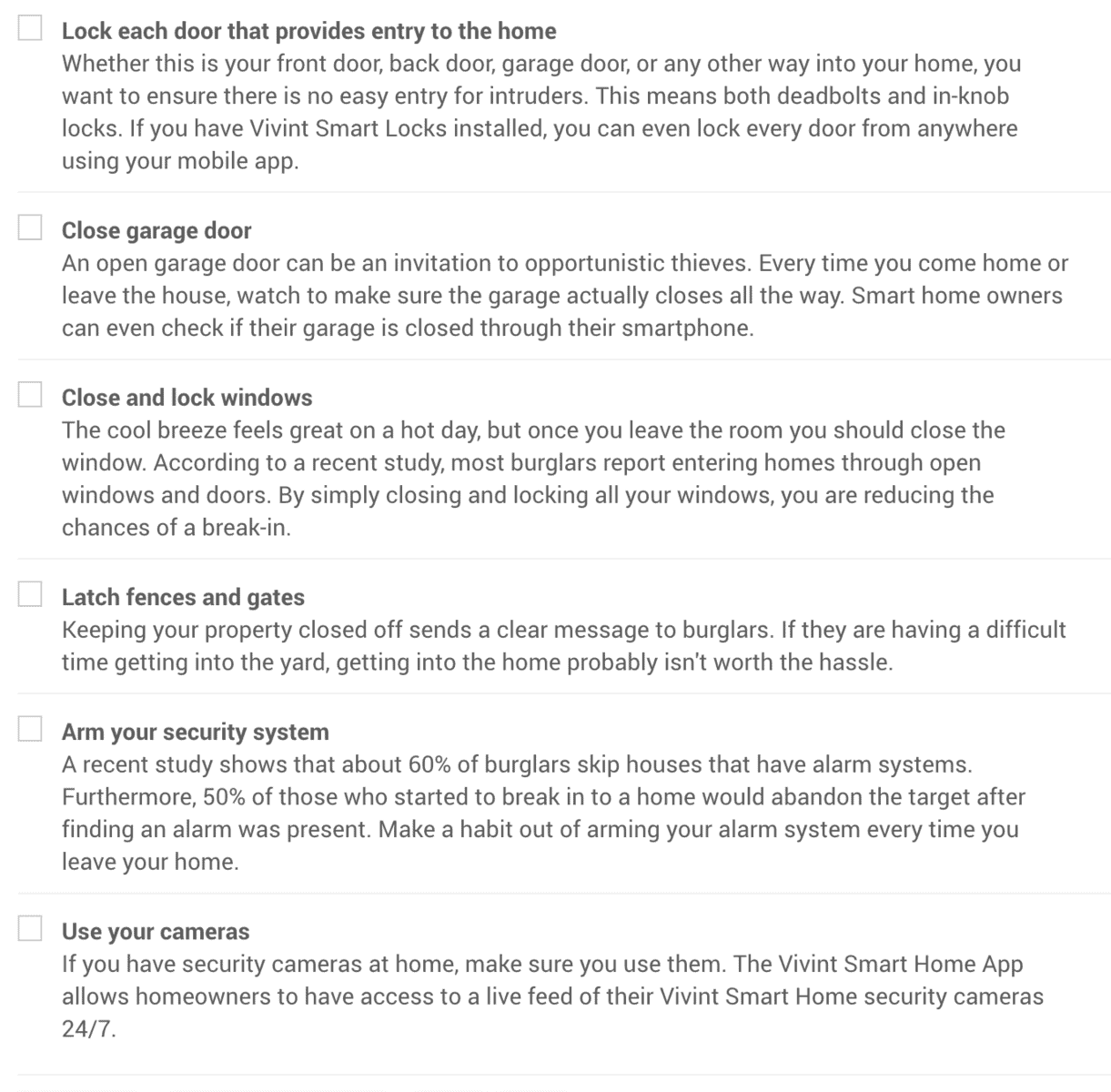
Training Family on Home Security
Everyone in the family plays a part in ensuring home security. Training and educating them about the importance of home security and how to use security systems can help improve the effectiveness of your security measures.
Creating a Security Routine
Establish a security routine in your home, like locking the doors and windows every night or activating the alarm system when the last person leaves the house. Make sure all family members understand and follow this routine.
Educating About Emergency Exits
Ensure everyone in the family knows how to use the emergency exits in case of a danger. Regularly practicing your exit strategy can help everyone feel confident about what to do during a real emergency.
Teaching Use of Security Systems
Teaching all family members how to use your security systems is very important. This includes how to arm and disarm it, how to detect when it’s been tampered with, and who to call if there’s a break-in.
Periodic Security Audit
Periodic security audits are crucial in evaluating your home security measures. Regular audits help you to spot any potential weaknesses and update your precautions as needed.
Scheduling Audits
Schedule periodic security audits, perhaps twice a year, like during daylight savings time changes, to ensure your security measures are functioning as expected.
What to Look Out for During Audits
During an audit, re-evaluate all potential entry points, check all locks and alarms to see if they’re functioning properly, and review your entire home security setup.
Updating Security Measures
After the audit, update your security measures as required. Perhaps you need to upgrade your door locks or add cameras in new locations. Always stay ahead of the game and continuously improve your home security measures. By doing so, you can maintain a safe and secure home for you and your family.




